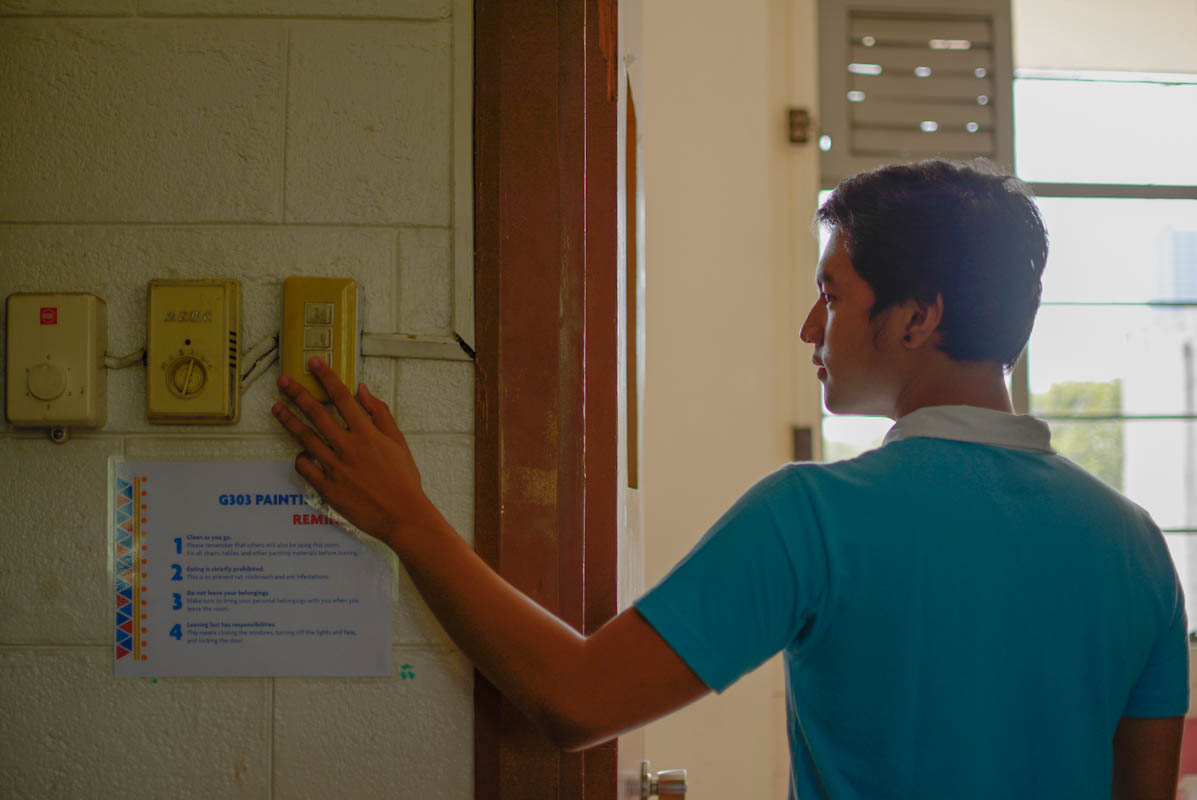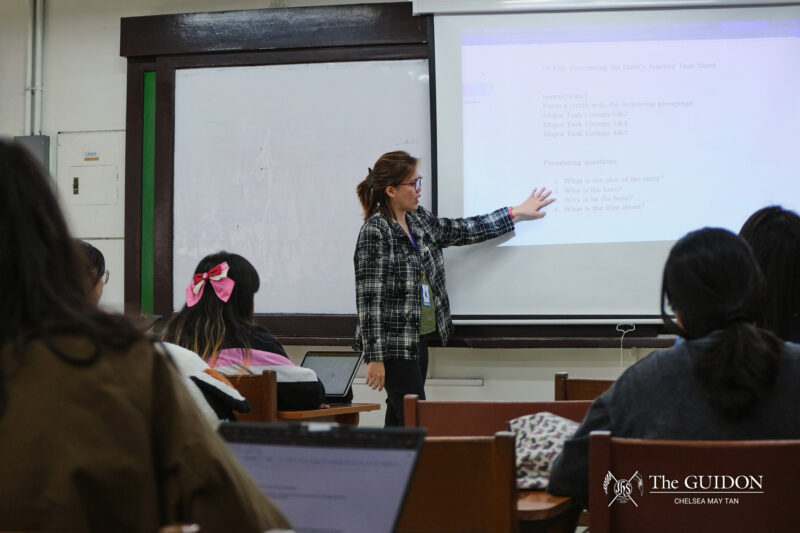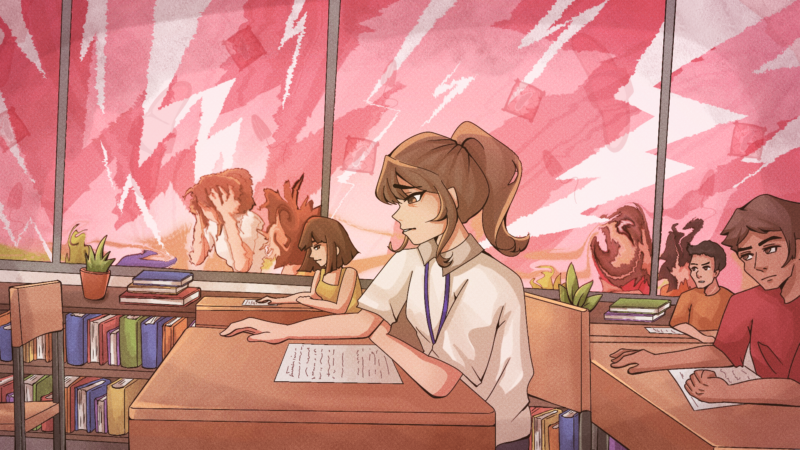AS PART of the University’s commitment to carbon neutrality by 2030, the Ateneo administration has announced the transition of the Loyola Heights campus to 100% renewable energy last May 26. This comes after the Ateneo signed a Supply Agreement partnership last May 23 with Shell Energy Philippines (SEPH) and SolX Technologies for the shift to renewable energy.
Under the Supply Agreement, SEPH will supply renewable energy to the campus; however, Meralco is still responsible for the actual energy distribution, according to Vice President for Administration (VPA) Rodolfo Ang.
Meanwhile, SolX Technologies is responsible for providing digital energy solutions to the Ateneo, such as providing the University with consultations on possible renewable energy sources. The partnership with SEPH will only span for two years due to the anticipated drop in renewable energy prices, as advised by SolX.
The GUIDON has asked for a copy of the agreement with SEPH and SolX. However, the Ateneo administration refused to provide one, explaining that the contract is bound by “confidentiality agreements.”
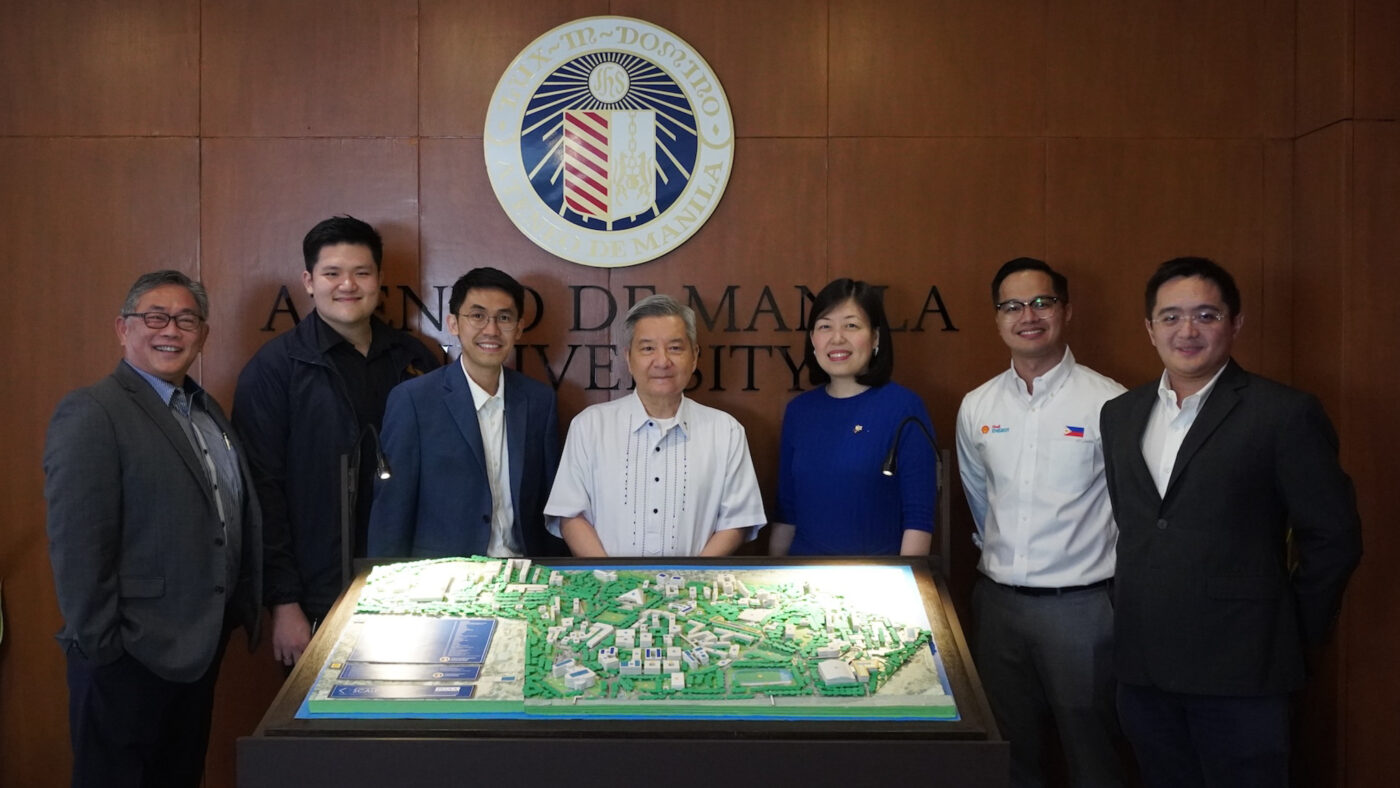
Following the partnership’s announcement, the Ateneo community expressed concerns about Shell’s practices. Students questioned the reputation of the company the University has chosen as its supplier, saying that it was a major contributor to global carbon emissions.
After the announcement of the partnership, Partido Pandayan and the Center for Energy, Ecology, and Development (CEED) organized a political situationer discussion to contextualize the community’s questions on the deal. In the event, CEED Deputy Executive Director Atty. Avril De Torres pointed out that Shell is ranked ninth among the world’s carbon major contributors.
The partnership also raised questions on SEPH’s issues on “greenwashing,” which refers to the practice of falsely promoting an item or service to be more environmentally friendly than it is.
The shortlist for sustainability
The University’s shift toward renewable energy has elicited a mix of reactions from the Ateneo community. While many commended the University’s efforts in its Laudato Si’ journey, others questioned several aspects of the partnership, particularly SEPH as its chosen partner.
To address the Ateneo community’s concerns, the Office of the VPA arranged a roundtable discussion on June 24 with representatives from the partner companies, as well as the Sanggunian and the Council of Organizations of the Ateneo – Manila.
During the discussion, Ang highlighted that SolX had a pivotal role in making the transition to renewable energy “faster,” since they were commissioned to help in identifying power providers that can supply the University’s energy needs.
In choosing possible sources of renewable energy, SolX CEO Sergius Angelo Santos disclosed that generators, retailers, and geothermal energy were all considered. However, retailers were eventually chosen because geothermal energy was limited, and choosing generators was prohibited by the Electric Power Industry Reform Act.
Consequently, SolX prepared a list of 55 retailers that could meet the Ateneo’s energy supply needs. In deciding on a partner, Ang mentioned that many of the candidates did not meet the University’s seasonal energy requirement to power the whole campus.
The Ateneo Sustainability Reports regularly recorded large amounts of annual energy consumption in the Loyola Heights campus alone, even amounting to a yearly average of 40 million megajoules from 2016 to 2019. Thus, among the long list of 55 companies that were initially drawn up, four were shortlisted, until the list was cut down to two.
Aside from the production quantity, the administration also considered each of the companies’ offered prices. As such, when it came down to the final two companies, SEPH ultimately emerged as the optimal partner with its cheaper rates.
Uncovering the partnership
Despite the lengthy selection process, the students’ concerns about SEPH’s “greenwashing” background remained. To this, Santos explained that part of all retailers have a history of natural gas and coal.
KLIMA Deputy Director Yla Gloria Marie Paras shared that many energy companies originally operated as coal producers before their ongoing transition to renewable energy. She added that these companies opt to continue using coal because of their existing coal plants, which have yet to achieve their maximum lifespan and return on investments.
Similarly, SEPH is known in the coal and gas industry; however, SEPH CEO Bernd Krukenberg points out that SEPH has already begun expanding its portfolio by sourcing renewable energy from hydropower, geothermal, biomass, and solar means. “Shell Energy Philippines’ portfolio is not 100% renewable, but we’re delivering 100% renewable [energy] to the Ateneo,” he reassured.
When asked about the monitoring process of guaranteeing that the Ateneo’s energy supply comes from 100% renewable energy, SEPH stated that they plan to provide evidence through written documentation.
Prior to searching for external energy sources, Ang noted that the University has already invested in renewable energy through the Ateneo Solar Power Project. However, he shared that by the end of 2024, only 20% of the Loyola Heights campus will be powered by the limited solar panels installed on various buildings. These currently include the John Gokongwei School of Management Building, PLDT Convergent Technologies Center, and Aretè.
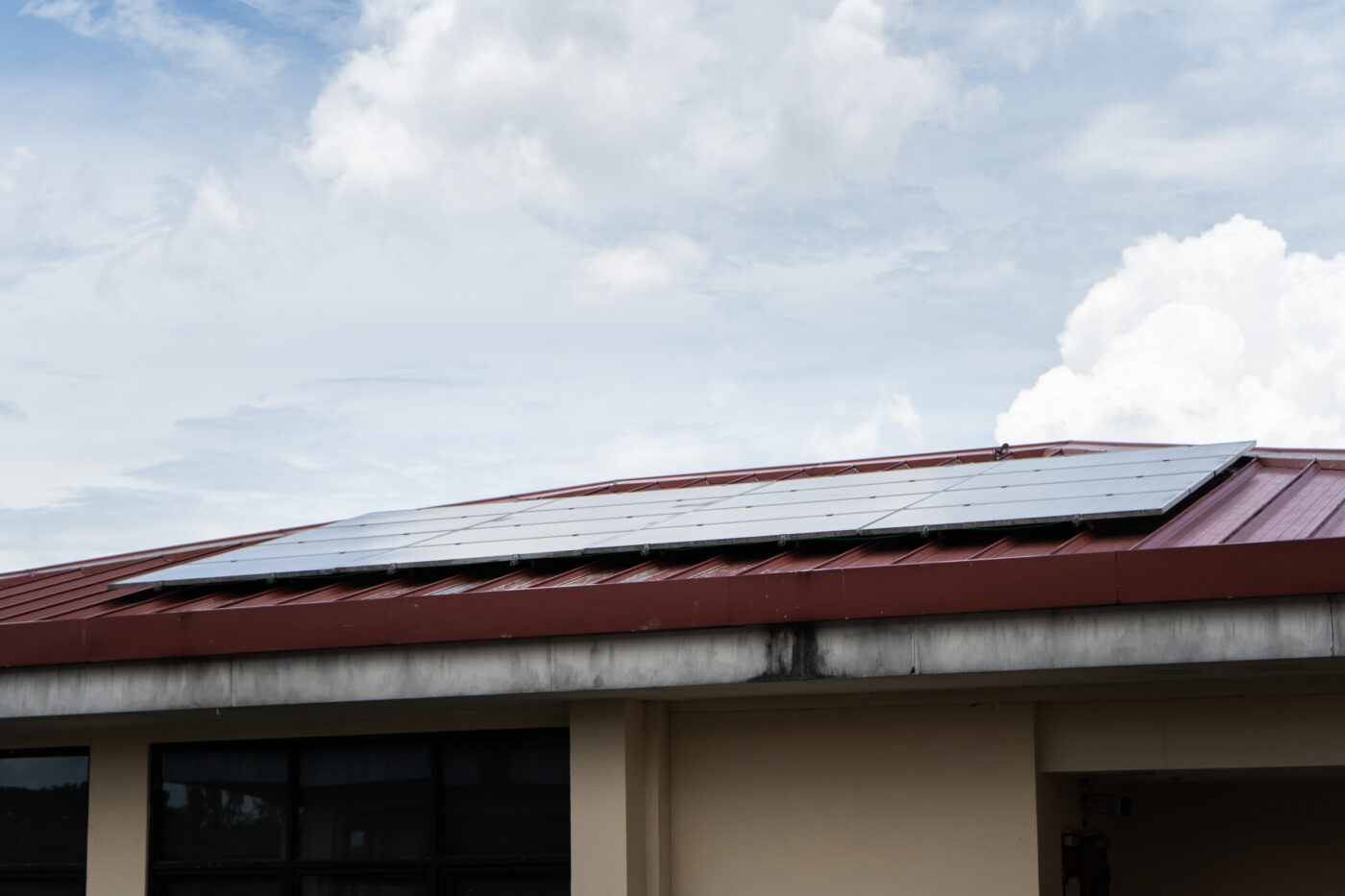
Ang said this insufficiency led to the decision of externally sourcing renewable energy, especially if the Ateneo wishes to achieve carbon neutrality by 2030. He added that solar energy is vulnerable to seasonal changes and may be “too expensive.”
Paras stated that solar energy alone cannot power the entire Ateneo campus unless the technology becomes more advanced. She also noted that some buildings on campus may be too old to be effectively powered by solar energy.
Similarly, Ateneo School of Government Dean Philip Arnold P. Tuaño, PhD disclosed that there have been continued discussions on how much energy the University can produce on its own. However, he said that the administration remains cautious with identifying areas for solar panel installation, as aside from the age of some buildings, other spaces may be reserved for future construction projects.
In terms of financial concerns, Ang clarified that the dependence on renewable energy will not have any effect on the annual tuition fee of students, given the small allocation for energy fees. Regardless, he reassured that any savings from the shift to renewable energy would be reallocated for other University needs.
Shared goal, different views
Apart from concerns on sustainability, Ateneans also expressed the lack of stakeholder consultations and the need for dialogue, which recently prompted a number of student-led initiatives. In particular, these efforts included the Sanggunian’s ‘Sabihin sa Sanggu’ thread, as well as Partido Pandayan and CEED’s political situationer that tackled the controversies behind SEPH and its “greenwashing” initiatives.
The Sanggunian School of Science and Engineering (SOSE) also released a Memorandum asserting that the partnership is “contradictory to the principles of Laudato Si’,” thus calling for a “just transition” to renewable energy. To achieve this, SOSE Representative Gian Marquez added that more student representation is needed prior to deciding on these partnerships and other “pivotal projects” that involve the Campus Master Plan.
Following the June 24 roundtable discussion, Marquez conveyed that his sentiments remained the same, emphasizing the call for more transparency and community-centric decisions from the administration.
“The students really believe that they are a part of this [issue]. […] [They] really demand na makasama sila sa conversations or at least marinig man lang kung ano yung side nila with regards to these crucial partnerships (The students really believe that they are a part of this issue. They really demand that they partake in the conversations, or at least let their sides be heard with regard to these crucial partnerships.)” Marquez expressed.
Nonetheless, Marquez stated that the students are on “the same boat” in the University’s goal of becoming a 100% renewable energy institution.
Paras similarly expressed her appreciation for the Ateneo’s move toward renewable energy. However, she conveyed that sustainability should encompass both environmental and health aspects. “Sustainability is not just physical, but also [about] the people because who will sustain [the environment] if not the people?” she asserted.
Responding to the call for more student representation, Ang explained that the issue was more complex than conducting consultations with the student body. However, he clarified that the administration usually consults with offices relevant to the concern at hand, such as the Ateneo Institute of Sustainability for issues on sustainability and mobility. For the energy supply partnership, though, SolX was mainly involved in the discussions.
Currently, transparency measures are being planned between the student representatives and the administration—through the Office of the Assistant Vice President for Ignatian Leadership Formation—to further institutionalize a space for student consultation.
While the administration has yet to give updates on other parts of the Campus Master Plan, Tuaño mentioned that the Climate Action Plan (CAP) is currently being developed to create baselines on the University’s carbon emissions and identify the areas in need of sustainable planning.
Notably, the CAP Core Working Group—chaired by then-University president Jose Ramon Villarin, SJ—aims to present the action plan to the University by 2025 following several consultations with various stakeholders.
ERRATUM: An earlier version of this article incorrectly stated that Ang claimed to consult the Ateneo Institute for Sustainability (AIS) for the partnership between the Ateneo, Shell, and SolX. Upon clarification from AIS Director Emmanuel D. Delocado, PhD, the article has been rectified to reflect that Ang did not claim to consult AIS for partnership. Furthermore, the article has been edited to clarify that the Ateneo mostly consulted the partnership with SolX. We apologize for the oversight.

